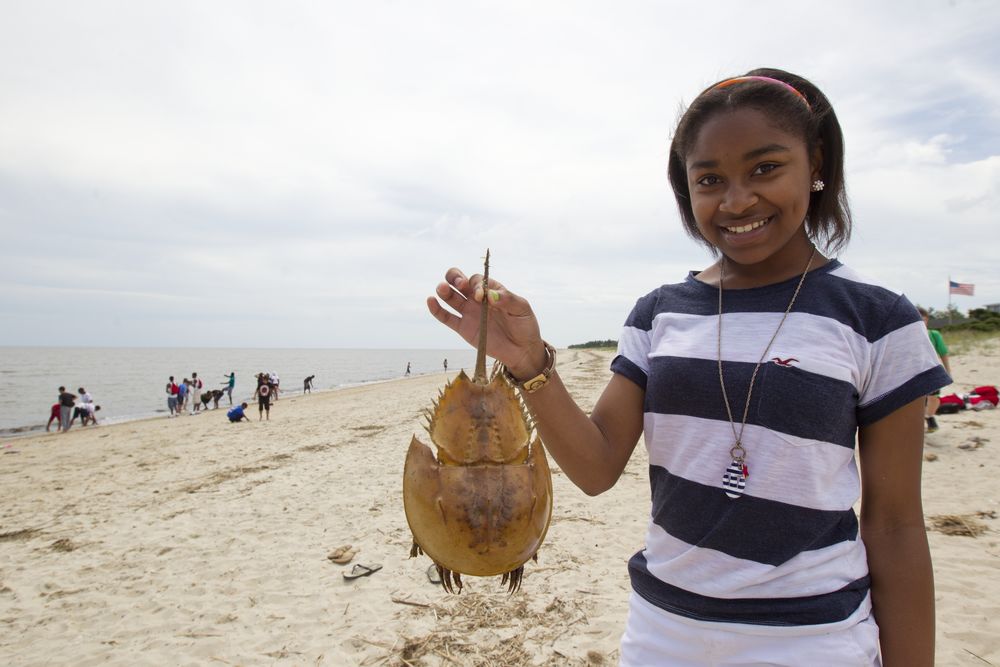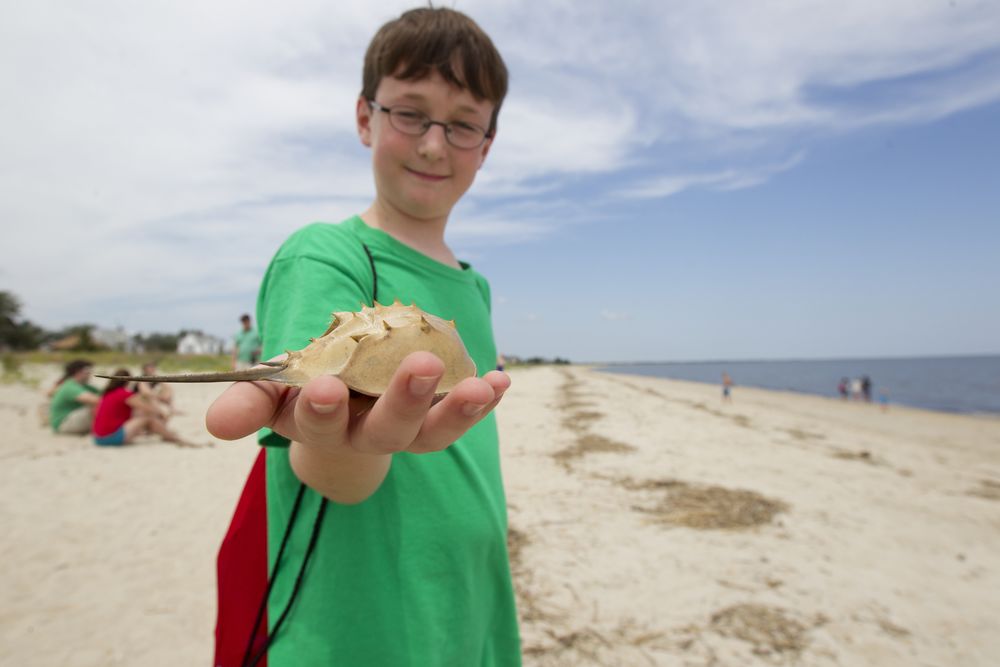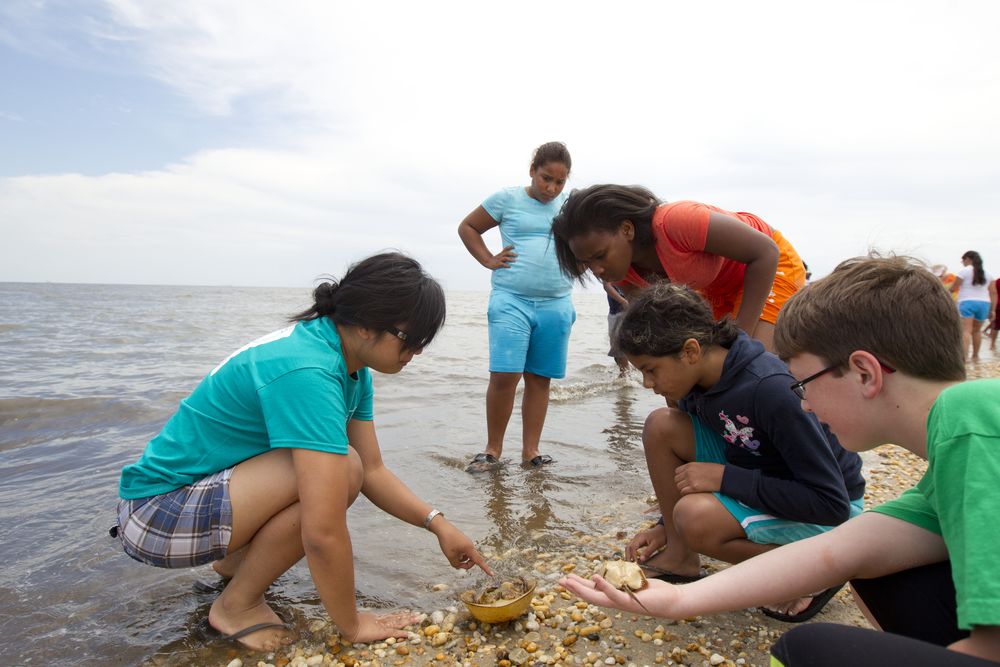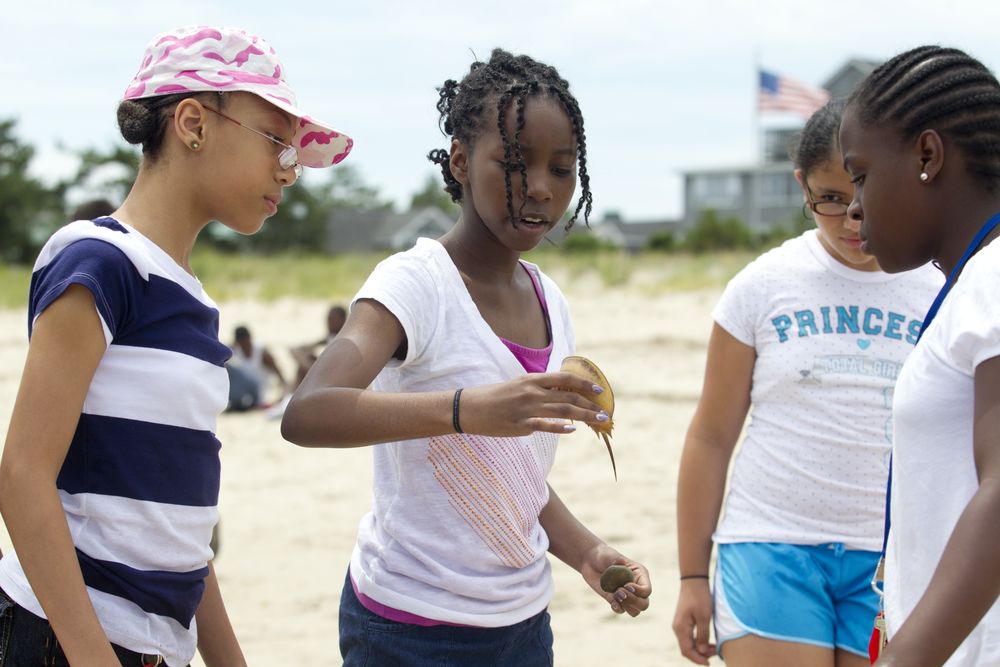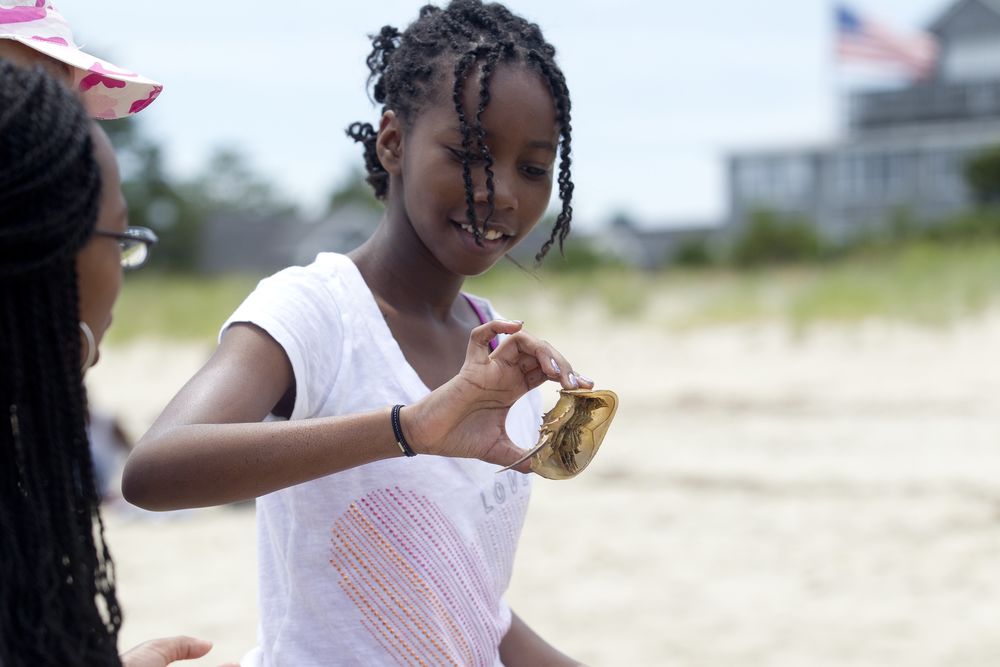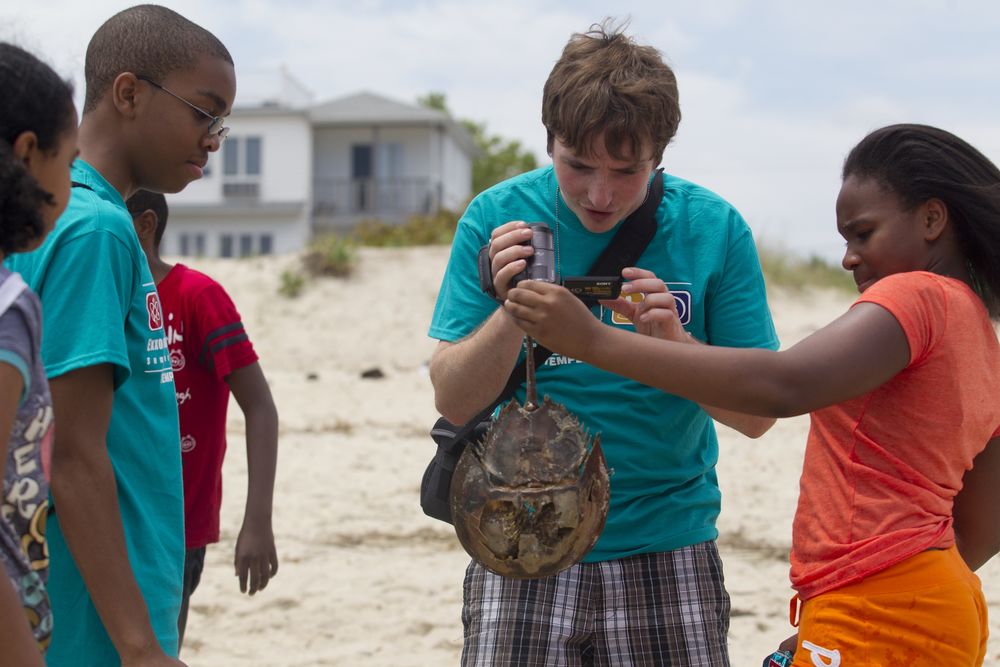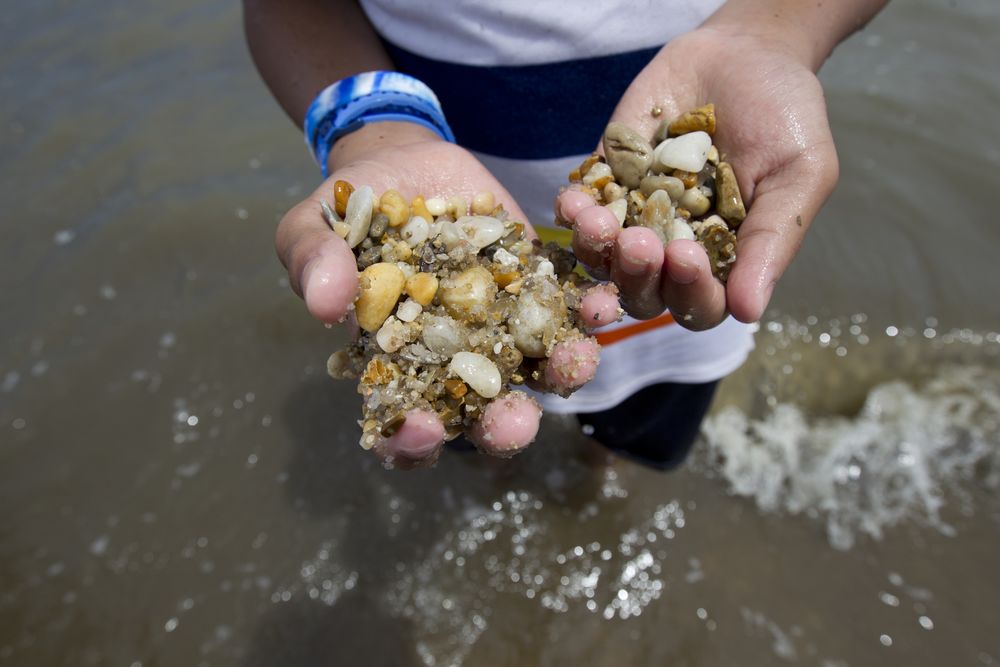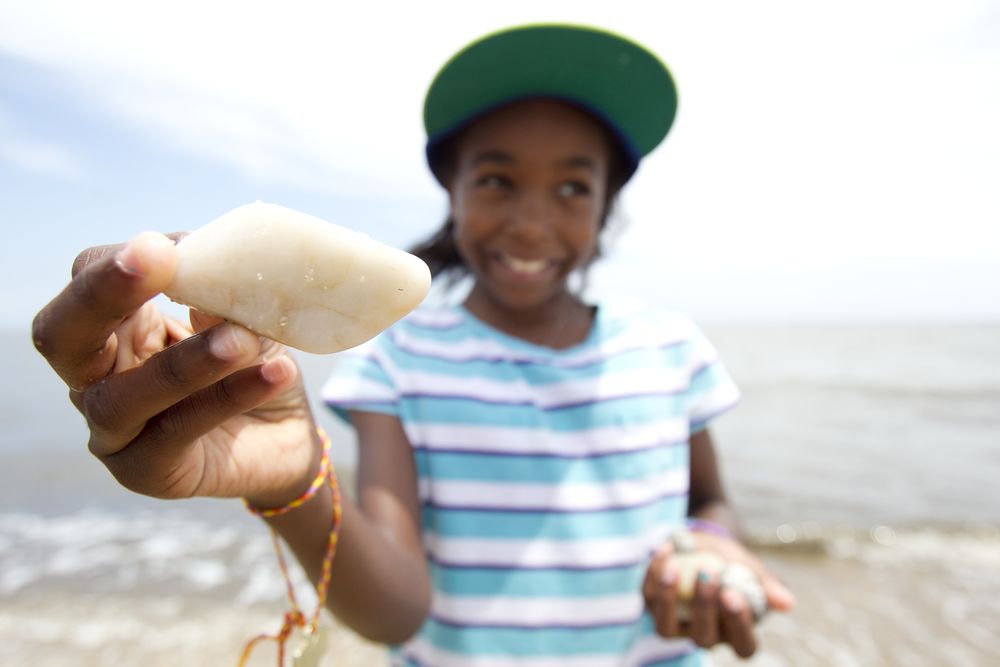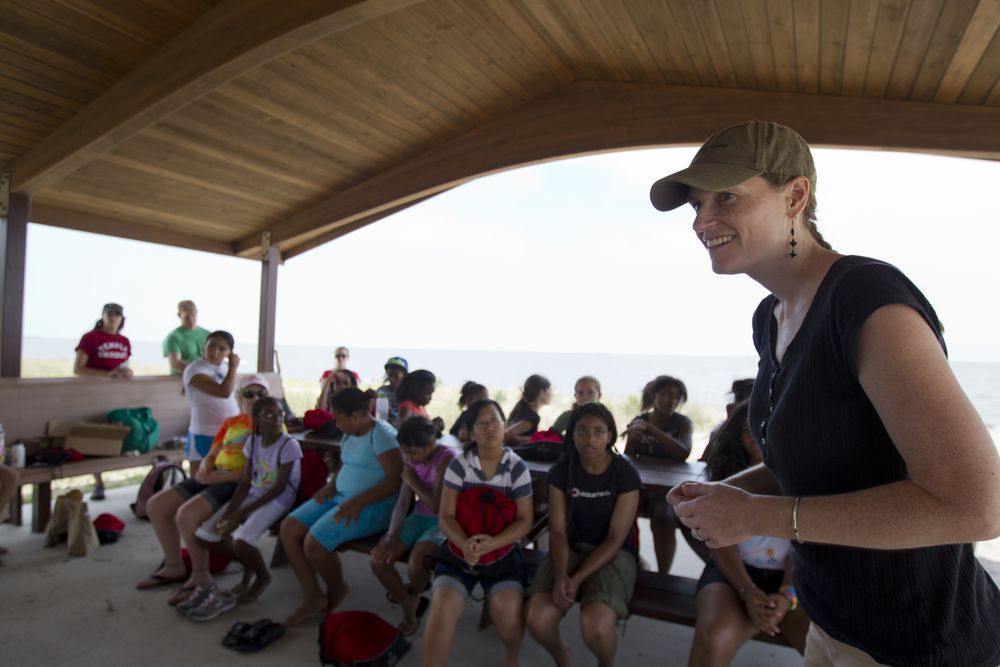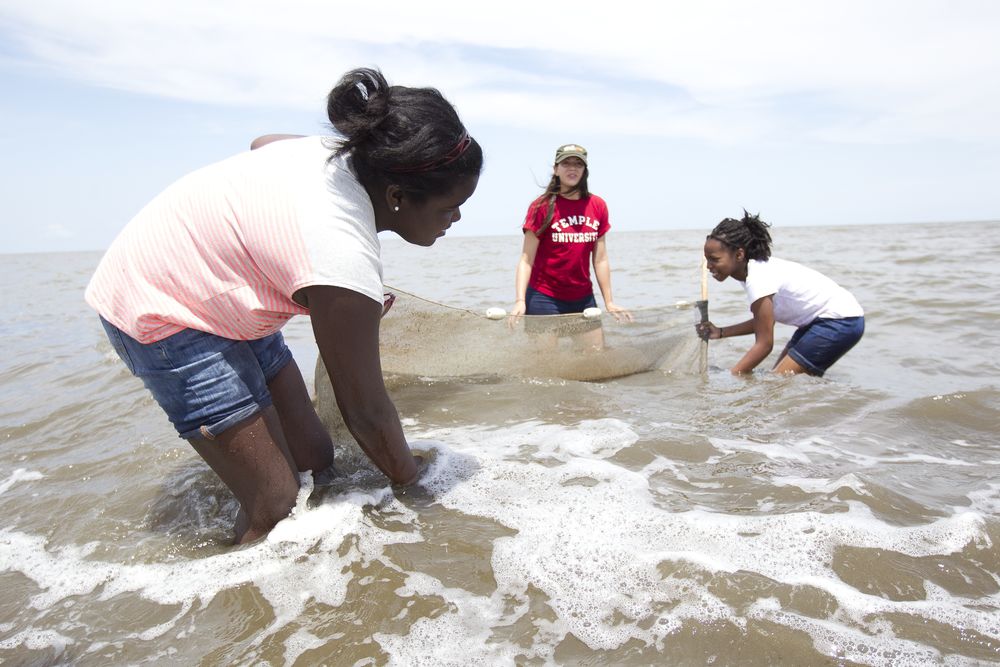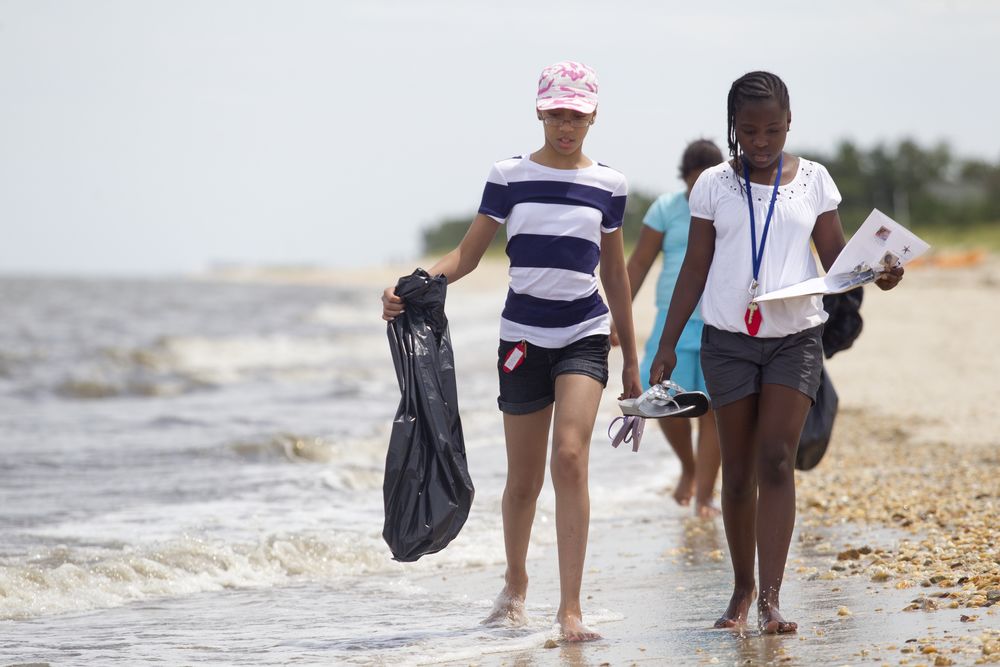Science campers study marine life during day at the beach
More than 50 school students from throughout the Greater Philadelphia area spent a day learning about beach ecology in the Delaware Bay as part of the two-week ExxonMobil Bernard Harris Summer Science Camp hosted by Temple’s College of Science and Technology.
The middle school campers visited the DuPont Nature Center and Slaughter Beach in Milford, Delaware, where they sampled marine, plant and animal populations, surveyed for horseshoe crabs and participated in a beach clean-up to collect plastic pollution — a large problem for marine ecosystems — along the beach.
“Our goal was to give the students an understanding of and appreciation for marine and coastal ecosystems by letting them experience and explore these ecosystems first hand,” said Temple biologist Amy Freestone, who led the trip along with doctoral students Katherine Papacostas, Elizabeth Rielly and Dusty Long.
Other camp activities included a two-day camping trip to the Poconos, a visit to a coal mine to learn about energy and fuels, lessons on how drugs like aspirin and acetaminophen are made, collection and analysis of pond water samples and a demonstration of the mathematics underlying the Mayan Calendar. Campers also designed and created a 14-layer space suit swatch capable of absorbing the impact of space debris, using only household items.
Bernard Harris, a former NASA astronaut and the first African-American to walk in space, participated in a teleconference with students during the camp’s finale. Harris has partnered with ExxonMobil for the past seven years to sponsor the summer science camps, which are designed to enhance middle school students’ knowledge in science, technology, engineering and mathematics.
This is the fifth consecutive year Temple has hosted the camp. The program was led by Temple chemist Susan Jansen Varnum and TUteach Co-Director Doug Baird and staffed by Temple student instructors and counselors.
